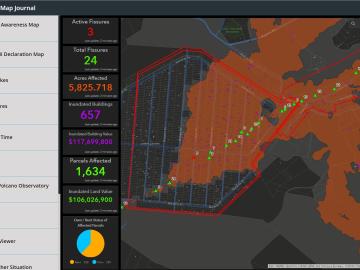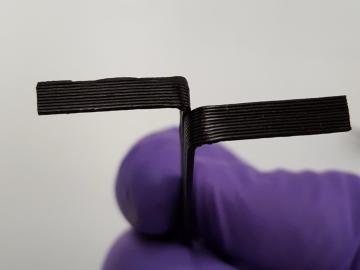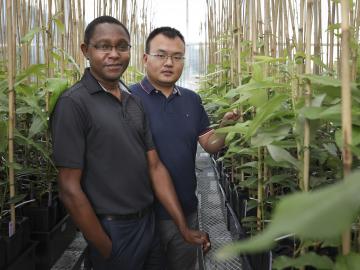
Filter News
Area of Research
- (-) Clean Energy (48)
- (-) Supercomputing (23)
- Advanced Manufacturing (2)
- Biological Systems (2)
- Biology and Environment (4)
- Building Technologies (2)
- Climate and Environmental Systems (2)
- Computational Biology (1)
- Energy Frontier Research Centers (1)
- Fossil Energy (1)
- Fuel Cycle Science and Technology (1)
- Fusion Energy (1)
- Materials (52)
- National Security (2)
- Neutron Science (26)
- Nuclear Science and Technology (14)
- Nuclear Systems Modeling, Simulation and Validation (1)
- Sensors and Controls (2)
News Topics
- 3-D Printing/Advanced Manufacturing (2)
- Artificial Intelligence (1)
- Bioenergy (1)
- Biology (1)
- Biomedical (1)
- Climate Change (1)
- Computer Science (5)
- Critical Materials (1)
- Cybersecurity (1)
- Energy Storage (1)
- Environment (2)
- Grid (3)
- Materials Science (1)
- Mercury (1)
- Physics (1)
- Polymers (2)
- Quantum Science (1)
- Security (2)
- Space Exploration (1)
- Summit (2)
- Transportation (4)
Media Contacts


Brixon, Inc., has exclusively licensed a multiparameter sensor technology from the Department of Energy’s Oak Ridge National Laboratory. The integrated platform uses various sensors that measure physical and environmental parameters and respond to standard security applications.


A scalable processing technique developed by Oak Ridge National Laboratory uses plant-based materials for 3D printing and offers a promising additional revenue stream for biorefineries.


When Michael Starke leaves the lab each day, he continues his work, in a sense, at home. The power systems engineer is developing methods to precisely control building electrical loads—and in his off hours, he has automated his own home with upwards of 90 smart devices to manage everything from heat...

The US Department of Energy’s Oak Ridge National Laboratory is once again officially home to the fastest supercomputer in the world, according to the TOP500 List, a semiannual ranking of the world’s fastest computing systems.

In an effort to reduce errors in the analyses of diagnostic images by health professionals, a team of researchers from the Department of Energy’s Oak Ridge National Laboratory has improved understanding of the cognitive processes

For decades, biologists have believed a key enzyme in plants had one function—produce amino acids, which are vital to plant survival and also essential to human diets. But for Wellington Muchero, Meng Xie and their colleagues, this enzyme does more than advertised. They had run a series of experiments on poplar plants that consistently revealed mutations in a structure of the life-sustaining enzyme that was not previously known to exist.

The U.S. Department of Energy’s Oak Ridge National Laboratory today unveiled Summit as the world’s most powerful and smartest scientific supercomputer.


